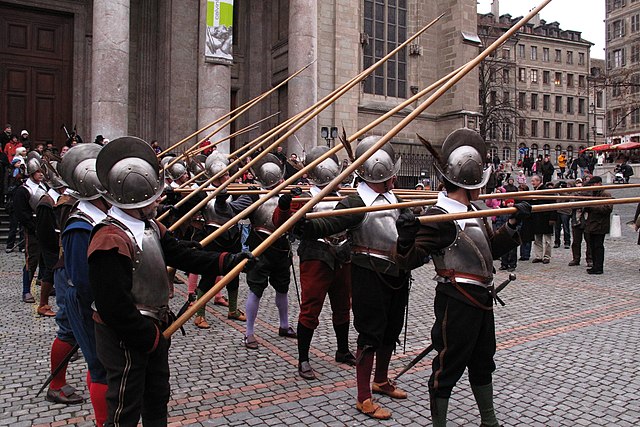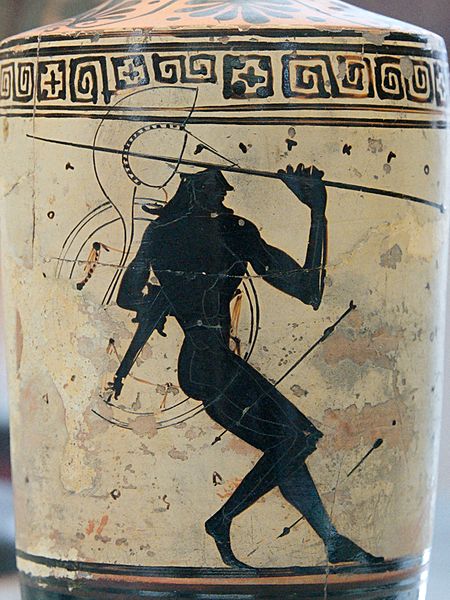A pike is a long thrusting spear formerly used in European warfare from the Late Middle Ages and most of the early modern period, and wielded by foot soldiers deployed in pike square formation, until it was largely replaced by bayonet-equipped muskets. The pike was particularly well known as the primary weapon of Swiss mercenary, German Landsknecht units and French sans-culottes. A similar weapon, the sarissa, had been used in antiquity by Alexander the Great's Macedonian phalanx infantry.
A modern recreation of a mid-17th century company of pikemen. By that period, pikemen would primarily defend their unit's musketeers from enemy cavalry.
Re-enactment during the 2009 Escalade in Geneva.
First rank with pikes at "charge for horse" static defensive posture, ready to draw swords if needed. Second rank holding their pikes at "charge" for delivering thrusts.
First rank with pikes at "charge" (their points projecting forward from the formation front), second rank holding pikes at "port" (upward to avoid injuring front rank friendlies with their points). In real action first 3 – 4 ranks will hold their pikes at "charge", and those behind will hold weapons at "port".
A spear is a polearm consisting of a shaft, usually of wood, with a pointed head. The head may be simply the sharpened end of the shaft itself, as is the case with fire hardened spears, or it may be made of a more durable material fastened to the shaft, such as bone, flint, obsidian, copper, bronze, iron, or steel. The most common design for hunting and/or warfare, since ancient times has incorporated a metal spearhead shaped like a triangle, diamond, or leaf. The heads of fishing spears usually feature multiple sharp points, with or without barbs.
The Clacton Spear, a spear point from about 400,000 years ago, and the oldest known spear, Natural History Museum, London
Hunting spear and knife, from Mesa Verde National Park
Athenian warrior wielding a spear in battle
Re-enactor outfitted as a Late Roman legionary carrying a pilum








